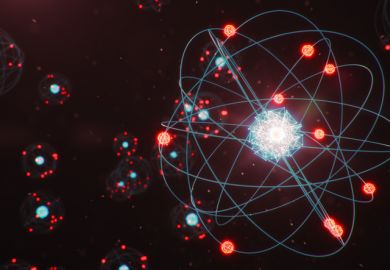It was Isaac Newton who first realised that the world around us is generated by fundamental forces acting between motes of matter, and that it is the job of science to discover the nature of these forces and of those particles. The modern twist, which “quantum theory” provides, is that the forces are not actually distinct from the motes of matter because they themselves are mediated by subatomic particles. Nevertheless, a complete description of nature’s forces and particles – a theory of everything – would suffice to describe the universe.
The everything, as Frank Close points out in his very readable Theories of Everything, historically has tended to be a subset of the world. But nature has been kind to us. It has been perfectly possible to “quarantine” the stuff that we do not understand and create a theory of the stuff that we do without any reference to the former. Newton’s laws of motion and of gravity, for instance, explained the behaviour of planets, ocean tides and cannonballs flying through the air without any consideration of electricity and magnetism.
Today, we have in our possession two enormously successful fundamental theories – on the one hand, quantum theory, which describes the world of atoms and their constituents; and, on the other, Einstein’s general theory of relativity, which describes stars and galaxies and the universe as a whole. However, their apparent incompatibility – general relativity is a theory of certainty, while quantum theory is a theory of uncertainty – makes their unification into a seamless whole the biggest challenge ever to have faced physics.
Of course, should we succeed in obtaining this modern-day theory of everything, we would not be able to predict the existence of a rose or of a line of Shakespeare’s poetry or of a baby’s smile. Quantum theory’s probabilistic nature means that today’s world is the result of countless rolls of nature’s dice since the Big Bang. Not only that but, as Close points out, although the theory of everything may be simple, its consequences will not be. Nature has a structure reminiscent of an onion, with new laws “emerging” in each layer that are impossible to deduce from the layer beneath. This is why particle physics tells us nothing about chemistry, chemistry nothing about biology, and the fabled theory of everything is unlikely to put anyone out of work, except of course those hunting for a theory of everything.
Close, who does an excellent job of explaining all this, is better on his research subject of particle physics than astrophysics. For instance, he thinks that, because the universe is 13.82 billion years old, the distance to the edge of the “observable universe” is 13.82 billion light years. Although this would be true if the universe had always expanded at the speed of light, cosmic expansion has varied immensely. While today the universe grows much more slowly than the speed of light, during the “inflationary epoch” in its first split-second of existence, it expanded far faster than the speed of light. The upshot is that the distance to the “cosmic light horizon” is not 13.82 billion light years away but about 42 billion light years away. This is a minor quibble, however, in a book that I enjoyed immensely.
Marcus Chown, formerly a radio astronomer at the California Institute of Technology, is author of The Ascent of Gravity: The Quest to Understand the Force that Explains Everything (2017).
Theories of Everything
By Frank Close
Profile, 176pp, £8.99 and £4.99
ISBN 9781781257517 and 9781782833093 (e-book)
Published 2 March 2017
后记
Print headline: Newton’s apple is part of the onion




